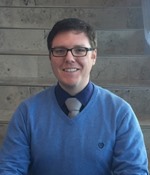Development of a Quality-Assurance Program for MR-Derived PDFF Measurements
Presentations
TH-IePD-TRACK 2-3 (Thursday, 7/29/2021) 3:00 PM - 3:30 PM [Eastern Time (GMT-4)]
Purpose: MRI accreditation does not currently require inspection for quantitative MR measures such as proton density fat fraction (PDFF). Here we report on the initiation of such a program for MRI-derived PDFF measurements at a large, regional health system. A low-cost phantom composed of varying fat percentages was constructed and scanned repeatedly over the course of 1 year. Based on repeatability coefficients reported in the literature, we hypothesized that an action limit of 2% absolute would capture normal variation.
Methods: Six fat/water vials were constructed with fat concentrations 0, 5, 10, 15, 22.5, 30% wt/wt. The phantom was scanned using the LiverLab product from Siemens Healthineers on five 1.5 T MRI systems. Software levels varied among systems: XA11 (1 system), VE11E (2 systems), and two systems were upgraded from VE11C to VE11E during the study period. The default CSE-PDFF protocol was used, with changes only to slice orientation to accommodate phantom geometry.
Results: All slopes were not significantly different from one (p>0.10 for all systems), albeit with wide confidence intervals (mean [CI]: 1.1 [0.9,1.4]). Excellent agreement was found for repeated scans, with no repeated measures differing from baseline by more than 1.7% absolute. Small biases (maximum -0.2% absolute) and a maximum coefficient of repeatability of 1.8% were found, in good agreement with values from the literature.
Conclusion: Given the excellent repeatability of CSE-PDFF measures, a quality assurance program that assessed longitudinal changes of a low-cost, home-made phantom with an action limit of 2% absolute change per vial found no changes over the course of one year.
ePosters
Keywords
Not Applicable / None Entered.
Taxonomy
Not Applicable / None Entered.
Contact Email



